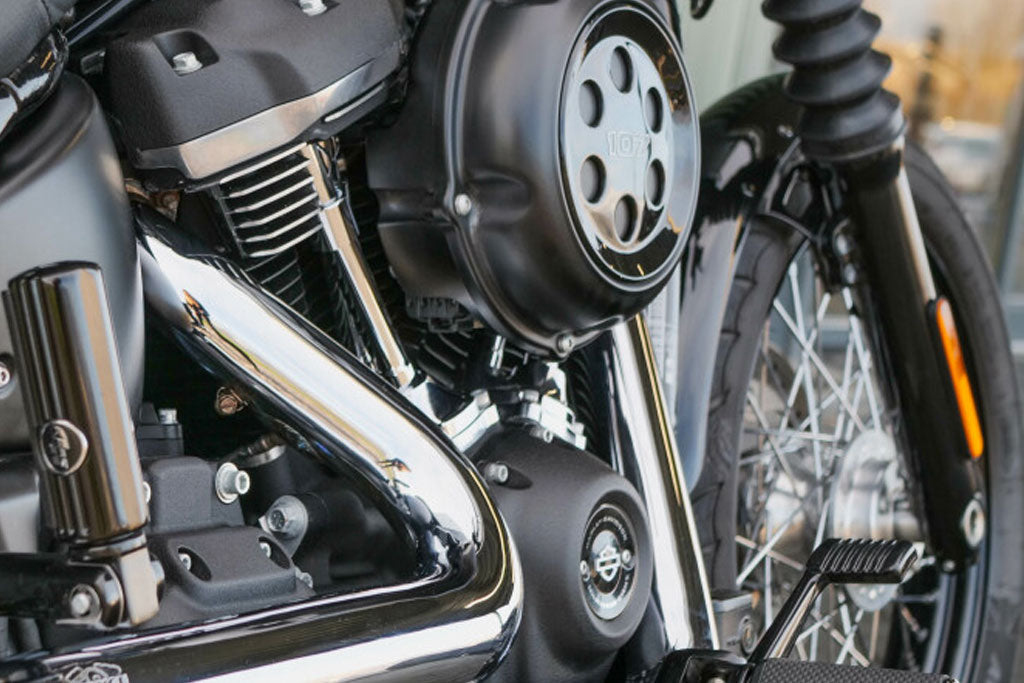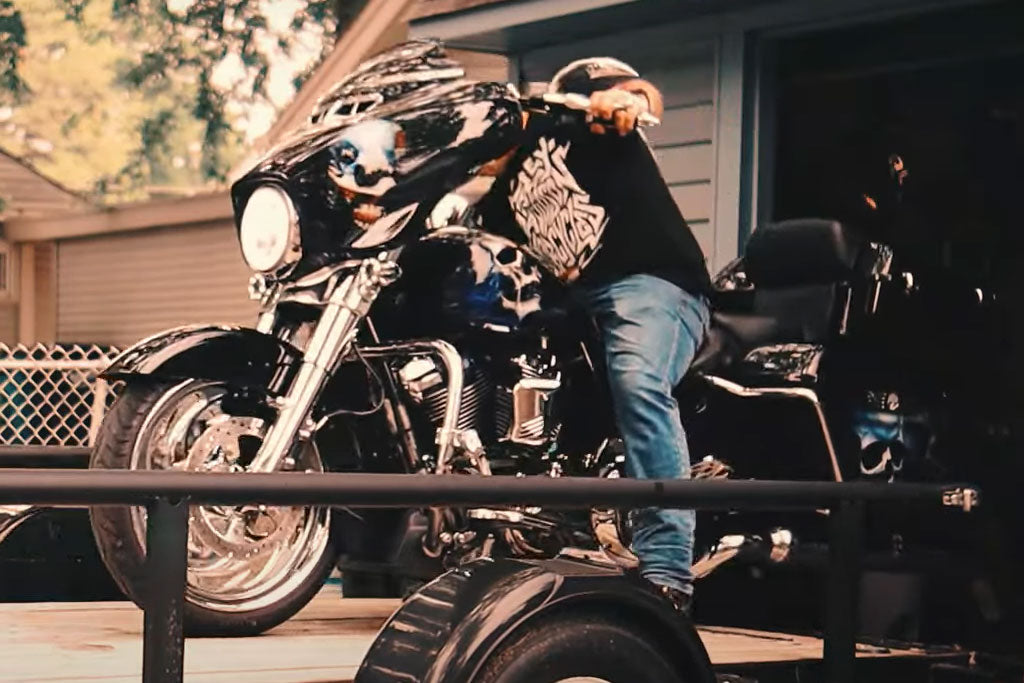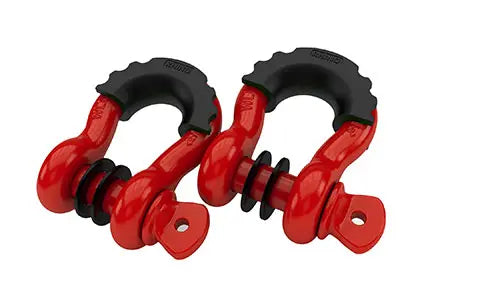
How to Transport a Motorcycle Like a Pro
Transporting a motorcycle requires proper planning and care to ensure its safety and prevent any damages. Whether you're taking your bike to a new location for a road trip or moving it across the country, knowing how to transport it like a pro is essential.

To ensure a secure and reliable transport, it's essential to invest in high-quality motorcycle tie-down straps. If you are not sure which straps to use, we recommend our 4-Pack Heavy-Duty Ratchet Tie-Down Set, which are specifically designed to keep your bike stable and secure during transportation.
These straps have been tested for their durability and strength, making them an indispensable tool for any motorcycle owner who needs to transport their bike.
In the following sections, we will delve into the specifics of how to safely load, tie down, and transport your motorcycle using these straps and other essential tips.
Preparing for Transportation

When preparing to transport a motorcycle, several key factors ensure a seamless process.
The first step is selecting the right trailer or truck bed for the job. There are various options available, including open and enclosed trailers, or a suitable truck bed with enough space for the motorcycle. Consider factors such as the motorcycle's size and weight, weather conditions, and the distance you'll be traveling when making your selection.
Inspecting the motorcycle is crucial before proceeding with transportation. Check for any loose items that may require removal, such as saddlebags, mirrors, or other aftermarket accessories. Ensure that your motorcycle is in good working condition and may be safely transported without causing any damage to the vehicle or surroundings.
The importance of gathering necessary equipment cannot be overstated. High-quality equipment ensures the safety and security of your motorcycle during transportation. Rhino USA Motorcycle Tie-Down Straps are highly recommended as a reliable and durable option to secure the bike. Additional equipment to consider includes:
- Wheel chocks: Prevent the motorcycle from moving while on the trailer or truck bed.
- Soft loops: Protect the motorcycle's paint and chrome during the tie-down process.
- A ramp: Facilitate safe loading and unloading.
Once you have gathered the appropriate equipment, follow these steps to prepare your motorcycle for transportation:
- Secure loose items: Remove any detachable accessories or loose parts from the motorcycle, as mentioned previously.
- Remove the battery: Disconnect the battery to prevent potential electrical issues or drain during transit.
- Place the motorcycle on the trailer or truck bed: Using the ramp, carefully guide the bike onto the chosen transportation platform.
- Position the wheel chocks and soft loops: Ensure the chocks are securely in place and use the soft loops to avoid causing damage when fastening the straps.
- Secure the motorcycle with Rhino USA Tie-Down Straps: Attach the straps tightly and adequately, confirming there is minimal movement.
Loading the Motorcycle

Loading a motorcycle for transport requires proper positioning, planning, and the right equipment. This section will cover the necessary steps and techniques for successfully loading a motorcycle like a pro.
First, prepare the motorcycle for loading. Remove any loose items, such as mirrors, saddlebags, or accessories, to prevent damage during transport. The fuel tank should also be nearly empty to avoid spillages or leaks.
Next, select the appropriate ramp to ensure both the safety of the motorcycle and its handlers. The ramp should be sturdy, long enough to reach the desired height, and wide enough to accommodate the motorcycle's tires. Position the ramp to provide the desired angle, making sure it is secure and stable.
Now, it's time to load the motorcycle. Approach the ramp with caution and control, maintaining a neutral throttle to avoid sudden acceleration. It's important to keep an even weight distribution throughout this process. You may want to enlist the help of a friend to guide and support the motorcycle as it ascends the ramp.
Once the motorcycle is successfully loaded onto the trailer or truck bed, it's crucial to secure it using reliable tie-down straps, such as Rhino USA's straps.
Position the motorcycle in a centered, upright position, with its kickstand up. Use soft loop straps to connect the tie-downs to the motorcycle's frame or secured attachment points. Avoid any potentially delicate components, such as brake lines or plastic fairings.
To ensure stability, use the following four-point tie-down method:
- Attach two straps at the front of the motorcycle, pulling them tight and downwards at a 45-degree angle.
- Attach two straps at the rear of the motorcycle, again pulling them tight and downwards at a 45-degree angle.
- Check the tension of each strap and adjust as necessary, ensuring that the motorcycle remains upright and secure.
- Recheck all straps after a short distance of travel to confirm that they remain secure and in place.
Securing the Motorcycle

Ensuring the safe and secure transport of your motorcycle is crucial. The first step is to understand the importance of secure tie-down points.
Choose suitable anchor points in the trailer or truck bed, as well as on your motorcycle itself. Engaging in sturdy attachment points, such as the frame or front fork tubes, will help maintain the motorcycle's stability throughout the journey.
It's essential to use the correct tension when securing your motorcycle to prevent movement during transit. To do this effectively, follow these steps:
- Position the motorcycle in the center of the trailer or truck bed, using a wheel chock to keep the front wheel in place.
- Attach tie-downs to the front fork tubes, making sure they are not twisted or tangled.
- Tighten the tie-downs, ensuring that the front suspension compresses slightly.
- For extra stability, wrap the rear tire and attach additional tie-downs.
While tying your motorcycle down, use retractable ratchet straps or soft loop straps as they offer better control and security.
| Equipment | Purpose |
|---|---|
| Wheel chock | Keep the front wheel in place |
| Tie-downs | Secure motorcycle to the anchor points |
| Retractable ratchet straps or soft loop straps | Offer better control and security |
Transit Tips

When transporting a motorcycle, there are several key tips to keep in mind to ensure a smooth and secure journey.
First and foremost, drive cautiously to accommodate the motorcycle's weight and size. This will help prevent any sudden movements that could cause potential damage to the bike.
In addition, it's important to check straps periodically during transit. Make sure that the straps are secure and not loosening, as this can lead to the motorcycle shifting during transportation and potentially becoming damaged.
Regular inspections of the tie-downs will provide peace of mind and ensure that the bike remains safe.
Weather conditions should also be a consideration when transporting a motorcycle. Rain, dust, and debris can all impact the condition of the bike, so it's essential to be mindful of how the weather may affect transportation. If possible, use a cover or protective layer to shield your motorcycle from the elements.
Unloading Safely

Before you begin unloading your motorcycle, choose a suitable location. Make sure the area is flat and free from any obstructions. This will provide a stable surface and minimize the risk of accidents.
To unload your bike safely, consider using ramps and assistance if needed. Position the ramp carefully, ensuring that it's securely attached to your vehicle. Also, make sure that it's placed on solid, non-slippery ground.
If possible, have an assistant to help guide the bike during the unloading process. This is especially important if you have a heavier bike or you're using a steep ramp.
Once you're ready to start unloading, carefully remove tie-down straps. Follow these steps to avoid any damage to your motorcycle:
- Double-check the stability of your bike before releasing any straps.
- Release the straps one by one, maintaining a firm grip on the motorcycle.
- Keep the bike balanced as you remove the straps, and avoid sudden movements.
- Carefully remove the wheel chock once all straps are released.
Maintenance After Transport

Once you've successfully transported your motorcycle, it's necessary to perform proper maintenance to ensure its functionality and preserve its condition. Three important steps are included in the post-transport maintenance process; inspecting the motorcycle for any signs of damage, cleaning it thoroughly, and storing tie-down straps properly for future use.
1. Inspecting the Motorcycle for Damage
After unloading your motorcycle from its trailer or truck bed, take the time to meticulously inspect it for any signs of potential damage that could have occurred during transport. Check the following components:
- Tires: Look for punctures, cuts, or embedded debris.
- Fluids: Check for leaks or spills, and ensure fluid levels are within the recommended range.
- Brakes: Confirm their responsiveness and check for unusual sounds or inconsistencies.
- Lights: Verify that headlights, taillights, and indicators are functioning correctly.
2. Cleaning the Motorcycle
Transporting your motorcycle may expose it to various contaminants, such as road grime, dirt, or debris. To maintain appearance and prevent corrosion, it's essential to clean your motorcycle after the transport. Follow these steps:
- Use a mild soap or dedicated motorcycle cleaner to remove stubborn dirt and grime.
- Thoroughly rinse your motorcycle with water to eliminate soap residue and dust.
- Dry the motorcycle using a clean, soft cloth to avoid water spots and prevent rusting.
- Apply a protective wax or polish to the surface to enhance its appearance and protection.
3. Storing Tie-Down Straps
Proper storage of your Rhino USA Motorcycle Tie-Down Straps not only extends their lifespan but also ensures their reliability in future motorcycle transports. Follow these guidelines for optimal storage:
- Inspect straps for any signs of wear, tear, or fraying, and replace them if necessary.
- Keep the straps away from direct sunlight, as UV rays can weaken their material over time.
- Store the straps in a dry, cool area to prevent mildew or moisture damage.
- Roll or fold the straps neatly to avoid tangles and maintain their integrity for future use.
Conclusion
In conclusion, to transport a motorcycle like a pro, it is crucial to follow essential guidelines for safe and secure transportation.
Firstly, ensure that you use appropriate equipment like Rhino USA Motorcycle Tie-Down Straps to minimize any risk of damage to your motorcycle during the process.
To recap, some key points to consider when transporting your motorcycle include:
- Properly securing your motorcycle with durable and reliable straps.
- Using a suitable transportation method, such as a motorcycle trailer, designed specifically for carrying bikes.
- Routinely checking and maintaining both the motorcycle and the transportation equipment.
- Double-checking slack and ensuring stability before embarking on your journey.
By carefully applying these tips, motorcyclists can ensure stress-free transportation and protection for their prized possessions.
Ultimately, attention to detail and emphasis on quality equipment and methods will lead to well-executed motorcycle transportation.
- Choosing a selection results in a full page refresh.








